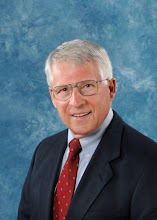To be able to move toward resilience over the time required for success, a community must adopt a resilience process that can be sustained in the face of normal community dynamics – changing leadership, competing priorities and constrained resources to name but a few. Of the things that occupied the CARRI team’s attention over the first year, none was any more critical than the establishment of a CARRI community resilience process that could be tested in our partner communities. A simple process that could be easily followed by any community seemed required if the idea of a certification regime that is viable for a nationally applicable program was to be realistic.
In examining a number of possible processes, we decided that a community resilience process was most likely to be successful if it had as a foundation something that communities were familiar with or were already using. In the end we settled on the process depicted in the chart below as our starting point.

In examining a number of possible processes, we decided that a community resilience process was most likely to be successful if it had as a foundation something that communities were familiar with or were already using. In the end we settled on the process depicted in the chart below as our starting point.

Any community that has used a visioning process to determine where it wants to be in the future or any community that has completed a basic vulnerability assessment like those required for various federal or state programs will be familiar with this process. What CARRI seeks to do is to add or modify this recognizable process to meet resilience needs. It will suffice here to mention just a couple of examples of those modifications.
Organizing in a manner that reflects the complete fabric of the community – government, private sector, non-governmental and faith based seems to us to be crucial. All community stakeholders have significant roles to play in community resilience and all must be included fully in the process. Building a compelling depiction of what the community will look like following a disaster or other severe disruption provides the overarching vision that will shape the goals so a vision box is included. Nothing is more important, however, than “community ownership” represented by the “formal community organization” box. Someone has to take charge of the process. That organization must be acceptable to the full community and must be able to strongly influence the community’s decision processes. The journey toward a resilient community will occur over time and in a dynamic environment. We see the establishment of a formal “owning” organization with the responsibility and the capacity to direct the effort as the first critical step in the certification process.

No comments:
Post a Comment